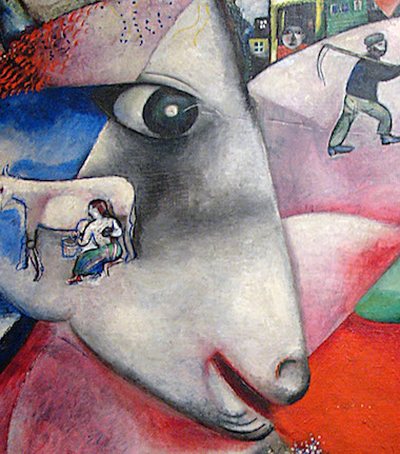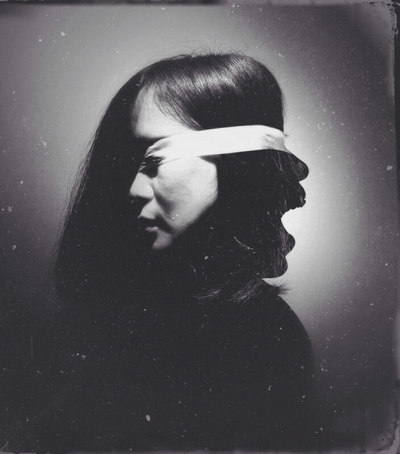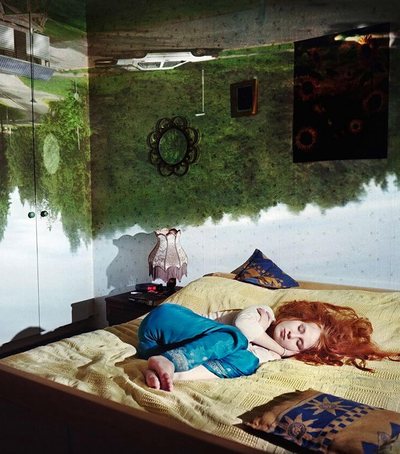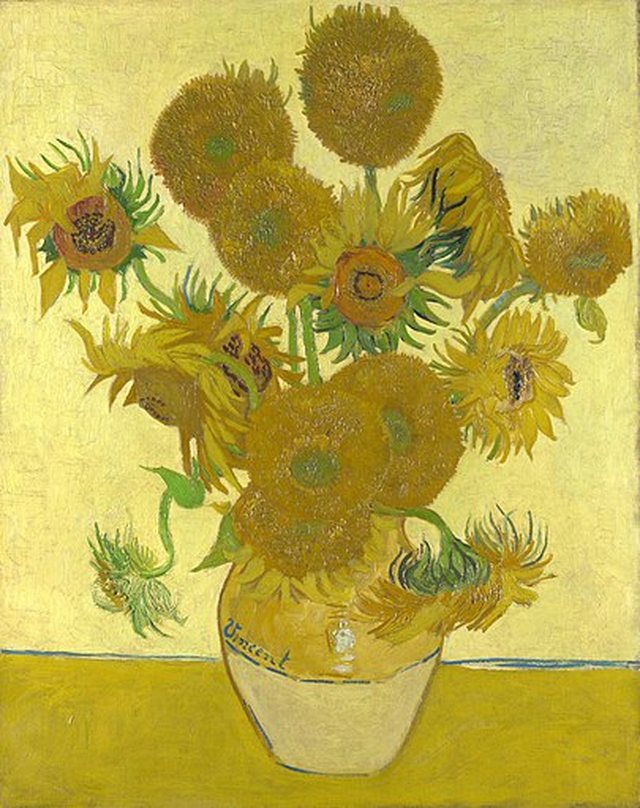
Sunflowers, 1988, Vincent van Gogh (Variant 4)
In the mid-19th century, the Van Gogh family lived a simple life in a rural Dutch town called Zundert. Vincent van Gogh's childhood in a bourgeois family had a significant impact on the troubled artist, leaving an indelible mark on his life and work.
Moreover, Van Gogh's arrival in this world came at a time of deep sorrow for his family. His mother had given birth to a stillborn baby only the year before, a tragedy that left a trail of anxiety and sadness in the family. As a shy child with a rich inner world, he found solace in daydreaming. He liked to remain in the shadows, observing his surroundings, an environment that others might consider ordinary and unremarkable.
To fully understand Van Gogh's love of sunflowers, it is necessary to delve into his history. Raised in a village far from cultural and political centers, he did not know luxury in his childhood. Perhaps this is why he was so fascinated by sunflowers, which he called "rustic sunflowers." In them he saw not elegance or sophistication, but a raw beauty—that of real life, of wild nature, and of authentic simplicity.
Sunflowers are powerful, fierce, and imperfect. Their strong petals and stem that changes shape as it follows the movement of the sun made this flower a symbol of endurance and passion. Perhaps, for Van Gogh, their bright color illuminated his days, whether in Holland, Paris, or Arles, giving light and warmth to his inner world.
The story behind the sunflower series
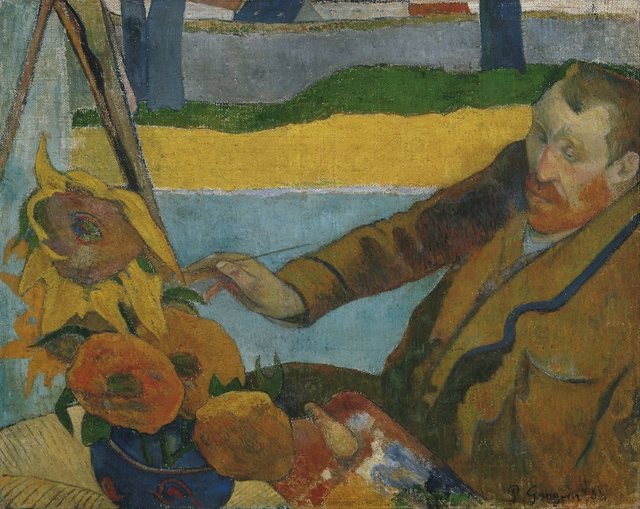
Paul Gauguin, Vincent van Gogh painting sunflowers, 1888
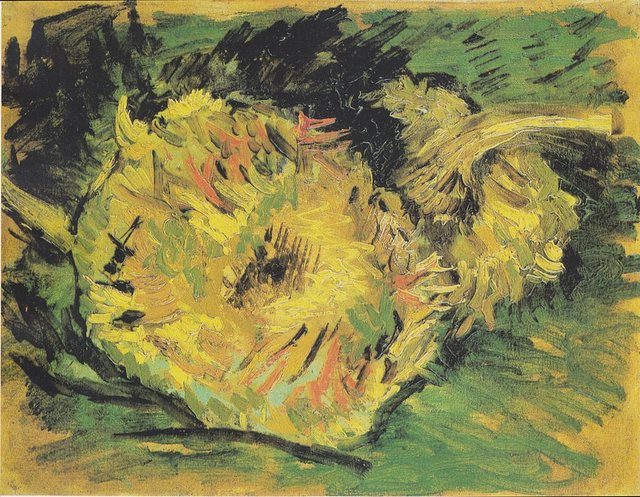
Vincent van Gogh, Sunflowers, August 31, 1887
In August 1888, Van Gogh wrote to his brother Theo, a prominent art dealer, mentioning a large sunflower he had seen in a window near a gallery. He explained that it had inspired him to create his first series of sunflowers, painted in 1887. The second series was done in Arles and included six canvases, two of which he called "repetitions".
These periods in his life are known as some of the most difficult and painful, but also the most artistically fruitful. During this time, Van Gogh created some of his most famous works, leaving an invaluable legacy in the history of art. Many of them have a deep sense of nostalgia, especially in the paintings where his mother and sister appear in a garden full of sunflowers.
Roli i Paul Gauguin në Dashurinë e Van Gogh-ut për Lulet e Diellit
Në dimrin e vitit 1888, Van Gogh dhe Paul Gauguin jetuan së bashku për disa javë në shtëpinë e verdhë të famshme në Arles, në jug të Francës. Për 63 ditë, ata ndanë një pasion të përbashkët për artin, por marrëdhënia e tyre shpejt u bë e tensionuar, duke u kthyer në një miqësi të trazuar dhe të shkurtër.
Pasi kishte pikturuar serinë e tij të parë me lule dielli në vitin 1887, Van Gogh iu rikthye kësaj teme gjatë kohës që jetonte me Gauguin-in. Ai e kishte ftuar mikun e tij në Arles me ëndrrën për të krijuar një "koloni artistike" të pavarur. Për ta mirëpritur, ai zbukuroi dhomën e tij me disa nga pikturat e tij të luleve të diellit, duke besuar se ato do të sillnin gëzim dhe ngrohtësi në shtëpinë e tyre të përbashkët.
Megjithëse miqësia e tyre ishte e sinqertë, ajo nuk ishte plotësisht e çliruar nga interesat financiare. Theo van Gogh, vëllai i Vincent-it dhe tregtar arti, pati një rol të madh në promovimin e karrierës së Gauguin-it, duke ndihmuar në ekspozimin dhe shitjen e veprave të tij. Pavarësisht dallimeve mes tyre, të dy artistët ushqenin një respekt të thellë për njëri-tjetrin dhe vlerësonin artin e njëri-tjetrit.
Gauguin, i impresionuar nga pikturat me lule dielli të Van Gogh-ut, e inkurajoi atë të vijonte me këtë seri, duke e ndihmuar të besonte edhe më shumë në punën e tij. Në total, Van Gogh realizoi 11 piktura me lule dielli, njëra prej të cilave humbi gjatë Luftës së Dytë Botërore.
Pavarësisht konflikteve dhe episodit tragjik të vetëdëmtimit të Van Gogh-ut, dy artistët ruajtën një korrespondencë të vazhdueshme deri në vdekjen e tij.
Simbolizmi i luleve të diellit
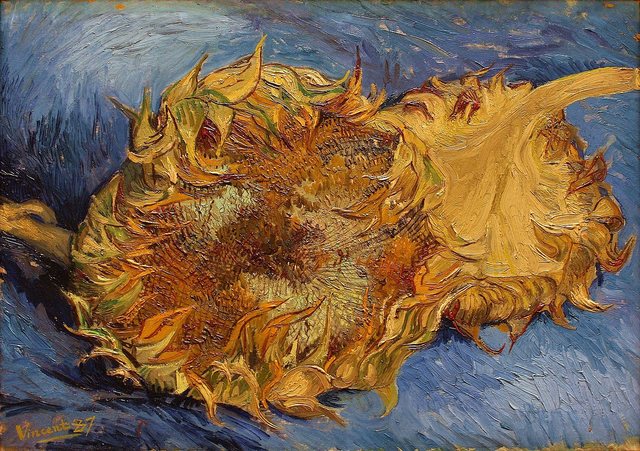
Për Van Gogh-un, lulet e diellit ishin një produkt i kohës së tij. Lulja e diellit përfaqëson faza të ndryshme të jetës; megjithëse shkëlqen më shumë kur dielli është në zenit, ajo nuk bëhet më pak interesante kur shpërbëhet në heshtje. Në atë kohë, puna e impresionistëve mbi dritën dhe ngjyrën pati një ndikim të madh te piktori. Ai, gjithashtu, ndjeu nevojën urgjente për të përzier hijet kontrastuese në vajrat e tij: ton mbi ton, e verdhë mbi blu, e gjelbër mbi të verdhë. Van Gogh eksperimentoi me ngjyrën. Më sovrania nga të gjitha? Sigurisht, e verdha.
Me kalimin e kohës, piktori e bëri këtë lule të dukej dhe të ndihej e shenjtë. Ai e ktheu atë në një simbol të jetës, një personifikim të dritës dhe të dëlirësisë së një ekzistence të thjeshtë. Van Gogh madje ka thënë se ajo simbolizon mirënjohjen. Në të njëjtën kohë, lulet e diellit ishin një ngushëllim i madh për Van Gogh-un.
Të bëhesh një me lulet e diellit
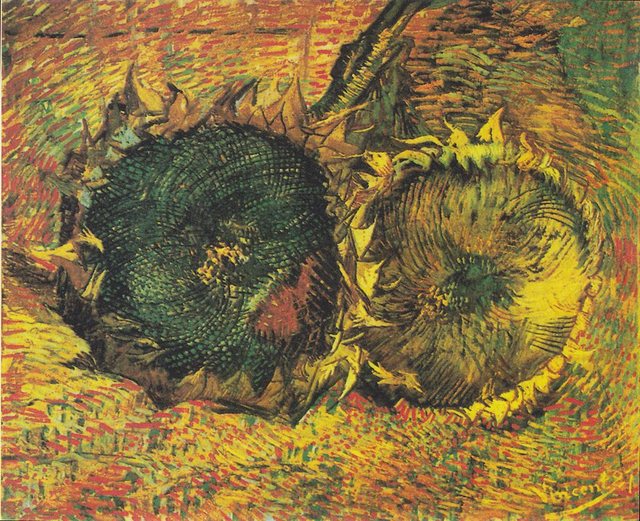
Van Gogh was characterized by a sense of uniqueness. From an early age, the artist worked to cultivate this rich inner world. Although emotionally supported and unconditionally loved by his brother, he often lived alone, in unstable environments. He recognized himself in sunflowers, which he considered magical living beings. Although his colleagues did not pay much attention to this plant, he decided to focus his work on them.
Gauguin said that sunflowers were “unmistakably Vincent.” Within a short period, from 1886 to 1889, the flower became the artist’s symbol. In a letter to his brother, Theo, Van Gogh wrote: “The sunflower is mine.” At his funeral, relatives held sunflowers in their hands.
Vincent van Gogh's short career had a profound impact on modern art. His paintings are among the most famous works of the 19th century and, without a doubt, among the most important in the history of art. Today, they sell for tens of millions of dollars... His sunflowers can be found all over the world, in the greatest museums!
Source and Copyright of the Article - Artsper Art Magazine:
Source: https://blog.artsper.com/en/get-inspired/why-van-gogh-loved-sunflowers/


